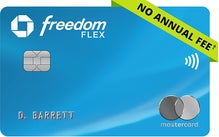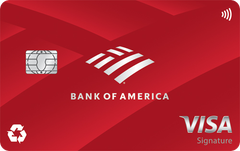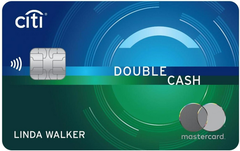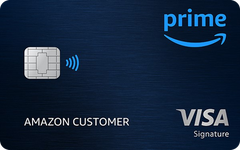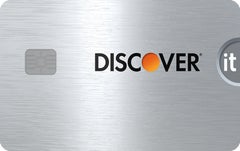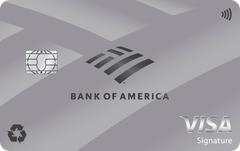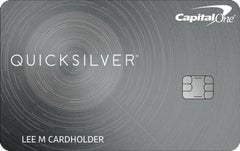Chase Freedom Flex℠ review: Plenty of value packed into one card
This card offers an excellent mix of fixed and rotating bonus categories.
The Bankrate promise
At Bankrate we strive to help you make smarter financial decisions. While we adhere to strict , this post may contain references to products from our partners. Here's an explanation for and how we rate our cards. The content on this page is accurate as of the posting date; however, some of the offers mentioned may have expired. Terms apply to the offers listed on this page. Any opinions, analyses, reviews or recommendations expressed in this article are those of the author’s alone, and have not been reviewed, approved or otherwise endorsed by any card issuer.
Snapshot
4.8
Bottom line
If you want a rewards card with great short- and long-term value, this card’s sign-up bonus, intro APR, fixed and rotating rewards categories and additional perks make it a worthy choice.
Intro offer
$200
Rewards Rate
1% - 5%
Annual fee
$0
Regular APR
20.49% - 29.24% Variable
Chase Freedom Flex℠ Overview
The Chase Freedom Flex℠ should be one of your top choices if you want a winning combination of bonus rewards and rotating cash back.
The Freedom Flex boasts no annual fee, solid cardholder perks, a terrific blend of everyday bonus categories, and one of the most flexible cash back rewards programs available. On their own, each of these benefits are impressive, but together they make this card one of the best cash back credit cards on the market.
However, quarterly categories may not be the best fit for you based on your spending habits. Learn more about how the Freedom Flex stacks up against other rewards credit cards and if it makes sense for you.
-
Rewards
- 5 percent cash back on activated bonus category purchases each quarter (up to $1,500 in purchases, then 1 percent) and Chase Travel℠ purchases
- 5 percent cash back on Lyft rides (through March 2025)
- 3 percent cash back on dining (including restaurants, takeout and eligible delivery services) and drugstore purchases
- 1 percent cash back on all other purchases
Expert Appraisal: Exceptional
See our expert analysis -
Welcome offer
- Earn a $200 cash bonus after spending $500 within your first three months
Expert Appraisal: Exceptional
See our expert analysis -
0% APR offer
- 0 percent intro APR on purchases for 15 months
- 0 percent intro APR on balance transfers for 15 months
- 20.49 percent to 29.24 percent variable ongoing APR
Expert Appraisal: Typical
See our expert analysis -
Rates and fees
- Annual fee: None
- Balance transfer fee: $5 or 3 percent of the amount of each transfer, whichever is greater in the first 60 days; $5 or 5 percent after the intro period
- Cash advance fee: $10 or 5 percent of each advance
- Foreign transaction fee: 3 percent of each transaction
- Late payment fee: Up to $40
- Returned payment fee: Up to $40
Expert Appraisal: Typical
See our expert analysis -
Other cardholder perks
- Zero Liability Protection
- Purchase Protection
- Extended Warranty Protection
- Free Credit Score and Identity Restoration with Credit Journey
- Fraud Monitoring
- Auto Rental Collision Damage Waiver
- Trip Cancellation/Interruption Insurance
- Travel and Emergency Assistance Services
- Cell Phone Protection
Expert Appraisal: Good
Chase Freedom Flex pros and cons
Pros
-
It offers a relatively long introductory APR, which could help you avoid interest on larger purchases and transferred balances.
-
A balance of ongoing rewards and rotating categories offers exceptional reward-earning potential.
-
It carries excellent travel protections and partner benefits for a no-annual-fee card.
Cons
-
You must pair it with a higher-tier Chase card to get a better redemption value for travel purchases booked through the Chase travel portal or if you want to transfer to Chase travel partners.
-
You must remember to enroll in rotating categories each quarter to maximize rewards.
-
Rotating bonus category earnings are capped.
Why you might want the Chase Freedom Flex
The Chase Freedom Flex card is great if you’re new to cash back because it offers boosted rewards rates in several categories (in addition to its rotating categories) and has a relatively attainable welcome offer. Its generous intro APR may also appeal to cardholders needing to make large purchases or consolidate debt.
Rewards: Offers a wide variety of boosted and rotating categories
Even cardholders who prefer the ease of flat-rate cash back cards can appreciate the Freedom Flex. While most cash back cards earn rewards at either a flat rate on all purchases, or in specific or rotating bonus categories, the Freedom Flex offers the best of all worlds, with a boosted rewards rate year-round in select categories and quarterly in others, with a decent flat-rate on all purchases.
The card’s backbone is its rotating 5 percent cash back on up to $1,500 in each quarter’s activated bonus category spending (then 1 percent back). Chase’s bonus categories are announced quarterly and usually feature everyday or seasonal expenses. For the first quarter of 2024, you’ll earn boosted rates at restaurants, hotels, and on purchases with Amazon and Whole Foods.
While the card’s 5 percent cash back categories rotate quarterly, you can earn in other popular categories year-round. For instance, cardholders can earn an unlimited 5 percent cash back on Chase Travel℠ purchases and 3 percent back on drugstore and restaurant purchases, including takeout and eligible delivery services.
Other rotating category cards, like the Discover it® Cash Back, offer similar bonus categories, but the Freedom Flex sets itself apart with the additional year-round rewards categories it shares with the Chase Freedom Unlimited®.
Welcome offer: Best return for your spending available
The Chase Freedom Flex’s current welcome offer clocks in at $200 after you spend $500 in your first three months of card ownership. This bonus offers one of the best returns on spend for a card with no annual fee. For instance, a handful of competitors require you to spend anywhere from $1,000 to $2,000 to earn a comparable bonus.
A $200 cash back return for spending $500 in your first three months is ideal if you’re a low-spender. You'll earn 40 percent back if you meet the spending requirement on top of any cash back rewards you earn while earning the bonus.
Intro APR: Standard intro offer with potentially low ongoing APR
Although this card’s introductory APR isn’t the most outstanding offer available to new cardholders, it gives the Freedom Flex a competitive edge compared to other cash back cards. You may also qualify for a relatively low regular APR when you open your card, helping you keep interest charges low after the intro period.
Bankrate’s take: Interest rates have climbed high due to rate hikes from the Federal Reserve, and there are possibly more rate increases to come. It may be a good idea to secure a card with an intro offer and low ongoing APR sooner rather than later.
Why you might want a different cash back card
Cardholders can find a lot to love with the Chase Freedom Flex, but they may also find the card’s activated rotating categories high maintenance, especially with the quarterly spending cap. You also might face a lot of fees if you happen to miss a payment.
Categories: Rotating categories may be hard to maximize
Quarterly rotating category cards can be limiting if you want to earn rewards on everyday purchases year-round. You may struggle to find outstanding value with the Chase Freedom Flex if you spend primarily in categories outside drugstores and dining purchases. Although 5 percent back is a great rewards rate, you’ll need to lean into the rotating categories every quarter or consistently make Chase Travel℠ purchases, otherwise you may be leaving a lot of rewards on the table.
For a simpler way to maximize your earnings, consider a rewards card with consistently boosted rates in your top spending categories. If you’re unsure what your top categories are, track your expenses for a month or two to see where you spend most of your money. Once you have a better understanding of your spending, you can determine if a tiered rewards card or a flat-rate card is a better fit for you.
Rates and Fees: No breaks for first-time mishaps
Although the Chase Freedom Flex doesn’t charge an annual fee, it charges for almost everything else, unlike other issuers. The Discover it® Cash Back, for instance, charges up to $41 for late payments and returned payments, but it won’t charge you for your first late payment. If you’re a first-time cardholder or still relatively new to credit, you may need more time to develop positive credit card habits. If this is the case, a more forgiving card could be better for you.
Spending caps: Limits your earnings at the card’s best rewards rate
If you plan to maximize Chase’s rotating categories, you might be disappointed with its $1,500 spending cap for earning 5 percent back (1 percent for all spending after this). Some categories may be easy to maximize, while others may prove more difficult, making it difficult to create a rewards strategy based on your typical spending.
The card’s ongoing rewards in reliable categories can help compensate for this inconsistency. But if you are a rewards strategist, you’ll want to strategically spend in the rotating categories and pair multiple rewards cards together to maximize the earning potential of the Freedom Flex.
We tried it: Here’s what our experts say
Bankrate credit cards writer Ryan Flanigan uses the Chase Freedom Flex as one of his go-to cards.
This new version of the former Freedom card is amazing. It took all the best parts — like the rotating bonus categories — and added more useful 3 percent categories. The intro offer also gave a year of bonuses for grocery and gas spending, meaning this was the only card I used for a long time. I max out the rotating bonus category every quarter to generate 30,000 points annually, which I can use in a variety of ways. The point return for no annual fee card makes this a no-brainer and a go-to for many situations for me. If you want a one-and-done card, look no further.
— Ryan Flanigan, Writer, Credit Cards
How the Chase Freedom Flex compares to other cash back cards
With an eye-catching combination of year-round and rotating bonus categories, the Freedom Flex remains a leader in the no-annual-fee cash back card pack. Nevertheless, depending on where you spend most and how you like to earn rewards, there might be cards that are a better fit.

Chase Freedom Flex®
Annual fee
Intro offer
Earn a $200 Bonus after you spend $500 on purchases in your first 3 months from account opening
Rewards rate
5% cash back on up to $1,500 in combined purchases in bonus categories each quarter you activate. Enjoy new 5% categories each quarter!. 5% cash back on travel purchased through Chase Travel℠. 3% cash back on dining and drugstores. 1% cash back on all other purchases.
Recommended Credit Score
A FICO score/credit score is used to represent the creditworthiness of a person and may be one indicator to the credit type you are eligible for. However, credit score alone does not guarantee or imply approval for any financial product.

Annual fee
Intro offer
Earn $200 in cash back after you spend $1500 on purchases in the first 6 months of account opening. This bonus offer will be fulfilled as 20,000 ThankYou® points, which can be redeemed for $200 cash back.
Rewards rate
Earn 5% cash back on purchases in your top eligible spend category each billing cycle, up to the first $500 spent, 1% cash back thereafter. Special Travel Offer: Earn an additional 4% cash back on hotels, car rentals, and attractions booked on Citi Travel℠ portal through 6/30/2025. Earn unlimited 1% cash back on all other purchases.
Recommended Credit Score
A FICO score/credit score is used to represent the creditworthiness of a person and may be one indicator to the credit type you are eligible for. However, credit score alone does not guarantee or imply approval for any financial product.

Annual fee
Intro offer
Earn an extra 1.5% on everything you buy (on up to $20,000 spent in the first year) — worth up to $300 cash back. That’s 6.5% on travel purchased through Chase Travel℠, 4.5% on dining and drugstores, and 3% on all other purchases.
Rewards rate
Enjoy 5% cash back on travel purchased through Chase Travel℠, our premier rewards program that lets you redeem rewards for cash back, travel, gift cards and more. 3% cash back on drugstore purchases and dining at restaurants, including takeout and eligible delivery service. 1.5% cash back on all other purchases.
Recommended Credit Score
A FICO score/credit score is used to represent the creditworthiness of a person and may be one indicator to the credit type you are eligible for. However, credit score alone does not guarantee or imply approval for any financial product.
Best cards to pair with the Chase Freedom Flex
The Freedom Flex is a great card to stack with other credit cards thanks to its diverse earning categories. Pairing the Flex with a card that earns a better flat rate on general purchases or offers more diverse redemption options can help you maximize your rewards.
Bankrate’s take: Consider pairing the Chase Freedom Flex with the Chase Freedom Unlimited and the Sapphire Reserve. This combo creates the powerful “Chase Trifecta,” which offers a better category scope, redemption options and rewards value potential than competing stacks.
Who is the Chase Freedom Flex card right for?
Bankrate’s Take — Is the Chase Freedom Flex worth it?
The Chase Freedom Flex card is at the top of the cash back game. Its familiar rotating categories are great if you’re a reward maximizer who enjoys shopping around for the most value, while year-round earning categories ensure you can always find ways to earn significant cash back.
However, this card — and other rotating category cards — are limited by a lack of flexibility that can make maximizing cash back difficult. If you want to choose your categories, or at least reliably predict them for the whole year, you might be more comfortable with a different cash back card.
The information about the Chase Freedom Flex℠ has been collected independently by Bankrate.com. The card details have not been reviewed or approved by the card issuer.
How we rated this card
We rate credit cards using a proprietary card scoring system that ranks each card’s estimated average rewards rate, estimated annual earnings, welcome bonus value, APR, fees, perks and more against those of other cards in its primary category.
Each card feature is assigned a weighting based on how important it is to people looking for a card in a given category. These features are then scored based on how they rank relative to the features on other cards in the category. Based on these calculations, each card receives an overall rating of 1-5 stars (with 5 being the highest possible score and 1 being the lowest).
We analyzed over 150 of the most popular rewards and cash back cards to determine where each stacked up based on their value, cost, benefits and more. Here are some of the key factors that influenced this card’s overall score and how the score influenced our review:
Frequently asked questions
* See the online application for details about terms and conditions for these offers. Every reasonable effort has been made to maintain accurate information. However all credit card information is presented without warranty. After you click on the offer you desire you will be directed to the credit card issuer's web site where you can review the terms and conditions for your selected offer.
Editorial Disclosure: Opinions expressed here are the author's alone, and have not been reviewed or approved by any advertiser. The information, including card rates and fees, is accurate as of the publish date. All products or services are presented without warranty. Check the bank’s website for the most current information.
